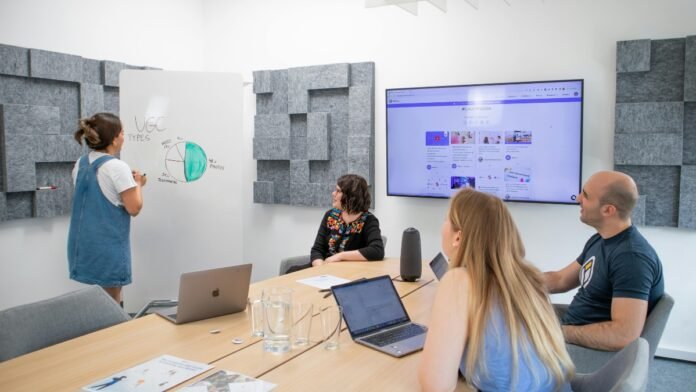Content marketing and SEO are crucial for driving organic traffic and building brand awareness. However, it’s not uncommon for businesses to find that their efforts in these areas aren’t yielding the desired results. If your content marketing and SEO strategies aren’t working, it’s essential to identify the issues and make necessary adjustments. Here’s a comprehensive guide on what to do to turn things around.
Assessing Your Current Strategy
Review Your Goals
Start by revisiting your goals. Are they specific, measurable, achievable, relevant, and time-bound (SMART)? Clear goals will guide your strategy and help you measure success accurately. Without clear goals, it’s difficult to determine what success looks like and whether your current efforts are on the right track.
Analyze Your Audience
Ensure you have a deep understanding of your target audience. Conduct market research to update your buyer personas. Understanding their needs, preferences, and behaviors will help you create content that resonates. Consider demographic information, pain points, and what type of content they consume. Tools like Google Analytics, social media insights, and surveys can provide valuable data.
Audit Your Content
Perform a content audit to evaluate the effectiveness of your existing content. Identify which pieces are performing well and which aren’t. Look for gaps in your content that could be filled to better serve your audience. Use tools like Screaming Frog, SEMrush, or Ahrefs to analyze your content inventory and assess metrics like page views, bounce rates, and time on page.
Identifying SEO Issues
Check Keyword Strategy
Analyze your keyword strategy. Are you targeting the right keywords? Use tools like Google Keyword Planner, SEMrush, or Ahrefs to find relevant keywords with good search volume and low competition. Ensure you’re not overusing keywords (keyword stuffing), which can harm your rankings. Consider long-tail keywords that may have lower search volumes but higher intent.
Evaluate On-Page SEO
Ensure your on-page SEO is optimized. Check for issues like missing meta descriptions, poorly structured URLs, lack of alt text for images, and improper use of header tags. Use tools like Yoast SEO for WordPress or Moz to identify and fix on-page SEO issues. Ensure each page has a unique meta description and title tag that includes your target keywords.
Analyze Backlinks
Backlinks are crucial for SEO. Use tools like Ahrefs or SEMrush to analyze your backlink profile. Identify low-quality or spammy links and disavow them. Focus on building high-quality backlinks from authoritative sites in your niche. Outreach to industry blogs, guest posting, and creating link-worthy content can help improve your backlink profile.
Improving Content Quality
Focus on User Intent
Create content that meets the user intent behind the search queries. Understand what your audience is looking for and provide valuable, comprehensive content that answers their questions and solves their problems. Google rewards content that satisfies user intent, so ensure your content is informative, engaging, and useful.
Enhance Content Structure
Ensure your content is well-structured and easy to read. Use clear headings, bullet points, and short paragraphs. Incorporate visuals like images, infographics, and videos to make your content more engaging. A well-structured article not only improves readability but also enhances SEO by making it easier for search engines to crawl and index your content.
Update and Repurpose Content
Regularly update your existing content to keep it relevant. Repurpose high-performing content into different formats, such as turning a blog post into a video or an infographic. This can help reach a broader audience and improve engagement. Updating old content with new information, better visuals, and more relevant keywords can also boost its performance.
Technical SEO and Website Performance
Improve Site Speed
Website speed is a critical ranking factor. Use tools like Google PageSpeed Insights or GTmetrix to analyze your site speed and identify areas for improvement. Optimize images, leverage browser caching, and use a content delivery network (CDN) to enhance site speed. Faster websites provide a better user experience and can lead to higher engagement and conversions.
Ensure Mobile-Friendliness
With the majority of users accessing websites via mobile devices, ensuring your site is mobile-friendly is crucial. Use Google’s Mobile-Friendly Test tool to check your site’s mobile compatibility and make necessary adjustments. A responsive design, fast load times, and easy navigation are key to a mobile-friendly website.
Fix Technical Issues
Regularly conduct technical SEO audits to identify and fix issues such as broken links, crawl errors, and duplicate content. Tools like Screaming Frog SEO Spider can help you find and resolve these issues. Ensure your site has a clean, logical structure and that your XML sitemap is up to date and submitted to search engines.
Enhancing Your Distribution Strategy
Leverage Social Media
Promote your content on social media platforms to increase visibility and drive traffic. Tailor your content for each platform and engage with your audience by responding to comments and participating in discussions. Use social media analytics to track engagement and adjust your strategy accordingly.
Email Marketing
Utilize email marketing to distribute your content. Build a mailing list and send regular newsletters with links to your latest content. Personalized email campaigns can drive engagement and traffic to your site. Segment your audience and tailor your emails to address their specific interests and needs.
Collaborate with Influencers
Partner with influencers in your niche to amplify your content’s reach. Influencers can help you reach a larger audience and lend credibility to your brand. Look for influencers whose audience matches your target demographic and who have a strong engagement rate.
Measuring and Adjusting Your Strategy
Monitor Analytics
Regularly monitor your website analytics to track the performance of your content and SEO efforts. Use tools like Google Analytics and Google Search Console to gather insights into traffic, user behavior, and conversions. Set up custom reports and dashboards to track key metrics at a glance.
Set Up Goals and KPIs
Define clear goals and key performance indicators (KPIs) to measure the success of your strategy. Track metrics such as organic traffic, bounce rate, average session duration, and conversion rates. Align your KPIs with your business objectives to ensure you’re measuring what matters most.
Test and Optimize
Continuously test different elements of your strategy to see what works best. Conduct A/B testing on headlines, calls-to-action, and content formats. Use the insights gained to optimize your strategy for better results. Regularly review and update your strategy based on performance data and industry trends.
FAQs
Why isn’t my content marketing strategy working?
Your content marketing strategy might not be working due to reasons such as not understanding your audience, poor content quality, lack of SEO optimization, or ineffective distribution. Analyzing these areas can help identify the problem.
How can I improve my SEO strategy?
Improve your SEO strategy by conducting thorough keyword research, optimizing on-page SEO, building high-quality backlinks, ensuring your site is mobile-friendly, and regularly performing technical SEO audits.
What tools can help me analyze my SEO performance?
Tools like Google Analytics, Google Search Console, SEMrush, Ahrefs, and Moz can help you analyze your SEO performance and identify areas for improvement.
How often should I update my content?
Regularly updating your content is important to keep it relevant. Aim to review and update your content at least every six months, or more frequently for time-sensitive topics.
What is the role of social media in content marketing?
Social media plays a crucial role in content marketing by helping you distribute your content, engage with your audience, and drive traffic to your website. It can also provide valuable feedback and insights into your audience’s preferences.
How do I measure the success of my content marketing efforts?
Measure the success of your content marketing efforts by tracking metrics such as organic traffic, engagement (likes, comments, shares), conversion rates, bounce rates, and the performance of specific pieces of content.
Conclusion
If your content marketing and SEO efforts aren’t working, it’s essential to take a step back and analyze your strategy.
By reassessing your goals, understanding your audience, improving content quality, optimizing technical SEO, and enhancing your distribution methods, you can turn your efforts around and achieve better results.
Regular monitoring and adjusting your strategy based on performance data will ensure ongoing success in your content marketing and SEO endeavors.




